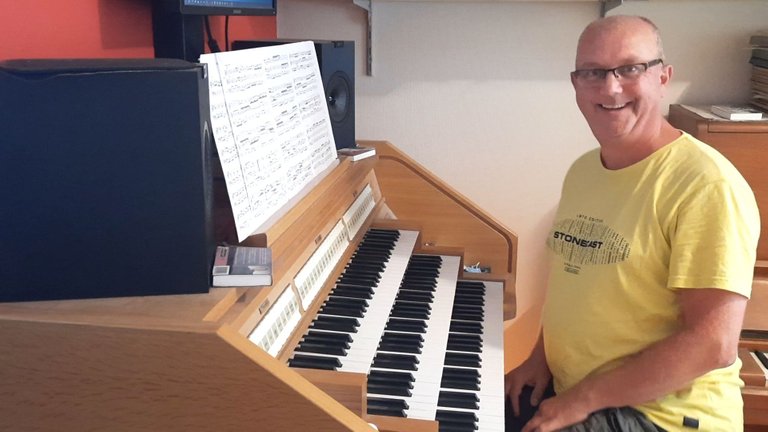Johann Sebastian Bach, Triosonate nr 3 d minor, II: Adagio e dolce | Secrets of Organ Playing Contest, Week 137
This is my entry for the Secrets of Organ Playing Contest, Week 137. I play the second movement of Bach's third Triosonata, Adagio e dolce.

I have been away on vacation for slightly more than two weeks. And in those two weeks, I haven not played an instrument at all. Great for relaxation, less so for technique. Even after only two weeks of not playing, the effects on my hands and feet are very noticeable. And I have to re-practice pieces of music that went very well before I went on holidays. So it's a bit of luck that I can re-enter the Secrets of Organ Playing with the slow movement of Bach's third Triosonata. This is not only the most easy movement of this Triosonata, it is perhaps even the most easy movement of all Bach's six Triosonatas. Very different from the this movement of this third Triosonata that I am going to practice next, as that is actually one of the most difficult movements.
Before I started to play this movement myself, I've always found it a bit boring. Bach uses the same material for the middle movement of his Concerto in a minor for flute, violin and harpsichord, BWV 1044. I'm not sure which version Bach wriote first, the organ version or the concerto version. Nevertheless, I allways thought it worked better as a middle movement of a concerto than as middle movement of an organ Sonata.
Now that I've worked with it for several days, I realize I was very mistaken. It is not boring at all, it is in fact a beautiful piece, that contains in its few bars (no more than 33) a wealth of ideas. From the galant opening bars, to the dramatic descending chromatic notes, to the spirited 32-nd notes. And noteworthy perhaps above all: the complete indepence of the three voices. The notes themselves are not the hardest to play. What makes this piece a challenge to play, is to try to articulate all three voices as if it were truly three musicians playing this piece.
The bass part of this movement strikes me more as a part for cello, than as a part for double bass. That's why I register it with only an 8 feet stop and not with a 16 feet stop. A principal would have been ideal. On this sample st however, the Principal of the pedal division is too strong for the two manual flute stops, so I settled for an flute stop in the pedal as well.
The recording was done with the Hauptwerk software and the sampleset, made by Sonus Paradisi, of the Hinsz organ in the Reformed church in the Midwolda (https://www.sonusparadisi.cz/en/organs/netherlands/midwolda-surround-sample-set.html).
Congratulations @primalamusica! You have completed the following achievement on the Hive blockchain and have been rewarded with new badge(s) :
Your next target is to reach 4000 upvotes.
You can view your badges on your board and compare yourself to others in the Ranking
If you no longer want to receive notifications, reply to this comment with the word
STOPTo support your work, I also upvoted your post!
Such a wonderful slow movement and you play it very beautifully!
Resteemed, your post will appear in the next curation post with a share for you!
Your post has been supported and upvoted from the Classical Music community (Subscribe at peakd) as it appears to be of interest to our community. We also support jazz and folk music posts!
If you enjoy our support of the #classical-music community, please consider a small upvote to help grow the support account!
You can find details about us below.
The classical music community at #classical-music, Peakd and Discord. Follow our community accounts @classical-music and @classical-radio or follow our curation trail (classical-radio) at Hive Vote!